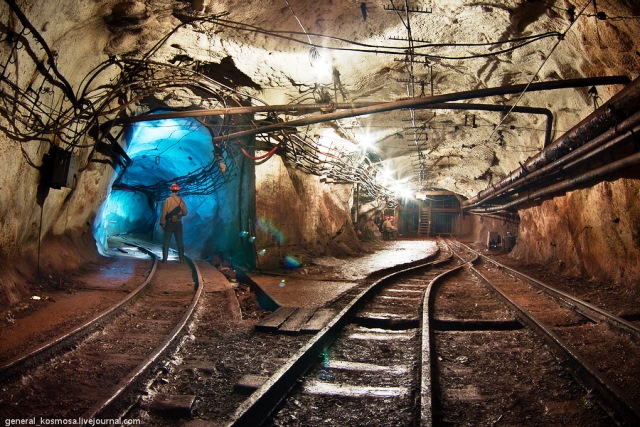
Rodina Mine was commissioned in July, 1972. This ore field mining (territory of a former Yuliya Shmakova Mine) has been being mined since 1886. Nowadays Rodina Mine is the deepest iron-ore mine of Europe.
By October 1, 1989 the Mine had been a component of Karl Liebknecht Mining Administration. After that it was a part of "Kryvbasruda" Industrial Association which filled about 60% of iron ore needs of the former USSR.
Nowadays the Mine is a component of PJSC "Kryvyi Rih Iron-Ore complex".
Designed capacity of the Mine is 2,6 million tons of rich ore; it is provided by introduction of horizons of 1240-1315 m. Ore mining is accomplished at horizon of 1315 meters. At present the mining shafts are being deepened up to 1540 meters. There are some preliminary operations for extraction on horizons of 1390 and 1465 meters. Geologists discovered deposits of saleable iron ore on the territory of the mine on a depth of more than1,8 kilometres. Advanced equipment of the top world producers are being put into operation of the mine. At present a high-producing Swedish shaft-sinking and tunnelling complex is already working here.
Besides the key shaft, Rodina Mine also comprises an auxiliary shafts "North ventilative" (provides ventilation of the underground workings) and a reserve shaft - a former Pravda Newspaper Mine.
An average output of iron ore is about 1,75 million tons per year with 59,50% percentage of iron. Rodina Mine is considered to be one of the most powerful mines in Kryvyi Rih due to its saleable ore deposits and high percentage of iron. Balance reserves up to 1765 meters depth is 148,1 million tons with 56,96% of iron.
In 1980 the Mine gained a scandalous popularity due to finding out of gold and a series of other rare elements by the Japanese buyers in the mine's ore. After that ore supplying to Japan was stopped, and gold percentage was estimated as non-commercial by the soviet specialists. During the whole history of the Mine there were many ore buyers and many western companies time after time had confirmed rare metals content in the ore. "Gold" history with Japan is considered to be not so famous, so as the analysis of ore had shown the enormous content of rare metals which are worth more than iron ore itself.
In fact iron-ore raw material of the Mine has always attracted western buyers due to its content of iridium, osmium, tungsten, molybdenum, platinum, gold and radioactive elements the total cost of which in 25-75 times exceeded the cost of saleable iron. Western magazines "De Telegraph" and "New Yorker" do not call Rodina Mine as iron-ore one, and they point out that by means of the European companies America and Sudan take out about 12 rare elements from raw material of this mine; platinum content in these raw material is about 12 g per ton, that is too much even for platinum-extractive enterprises. In the same way while processing operations the Indian buyers found 184 gold nuggets weighing from 0,5 to 24,6 grams, without taking into account smaller nuggets.

